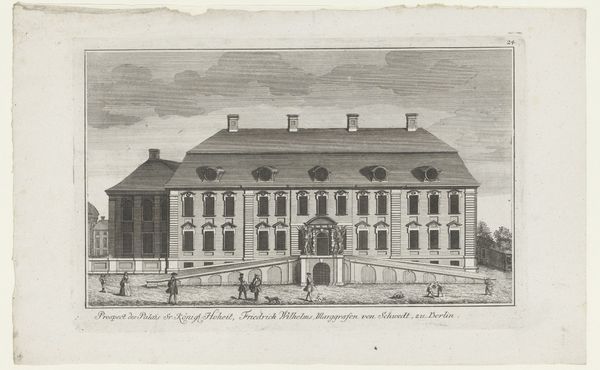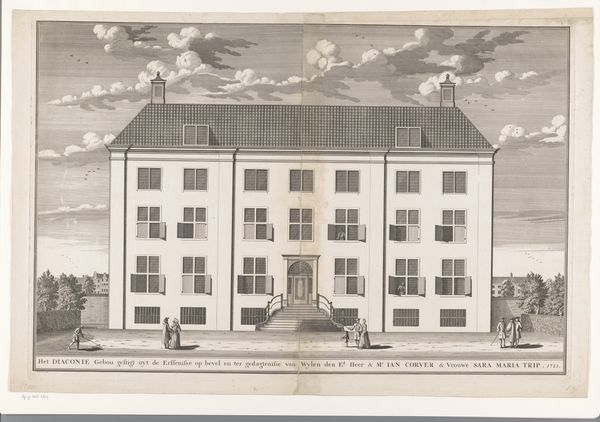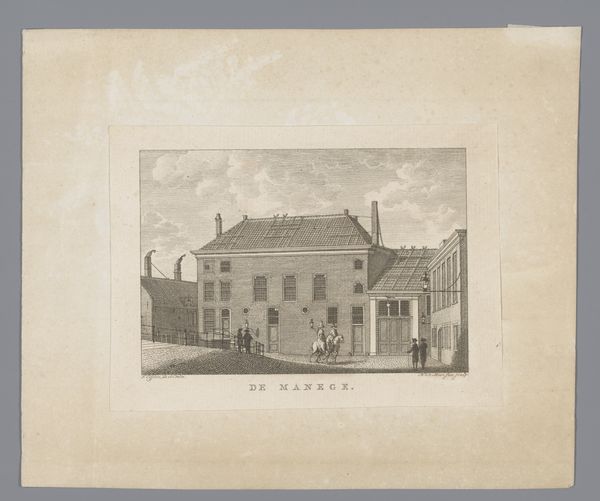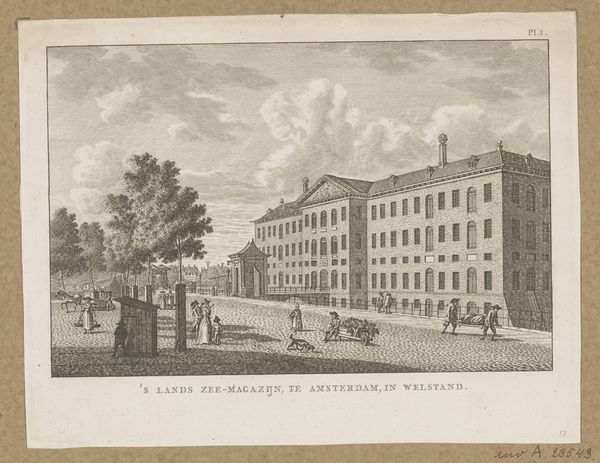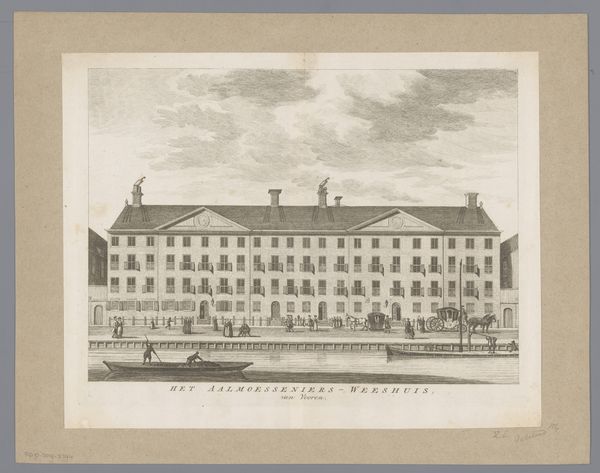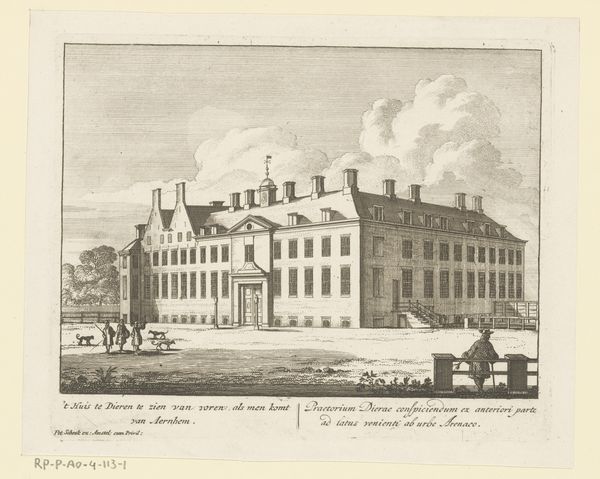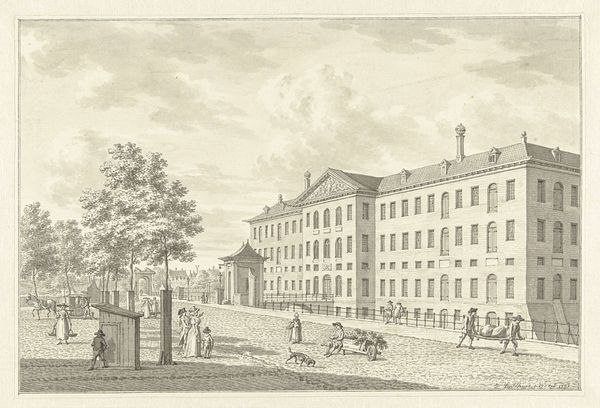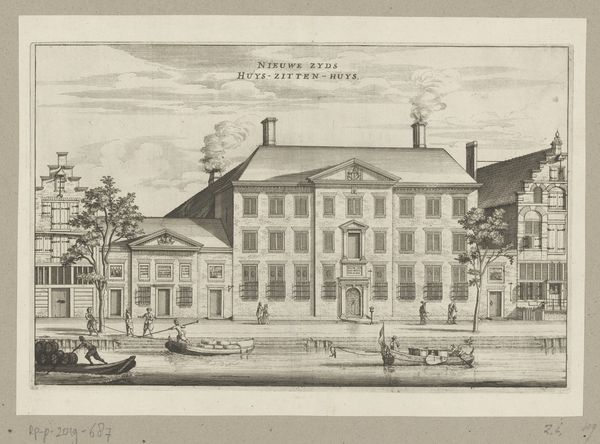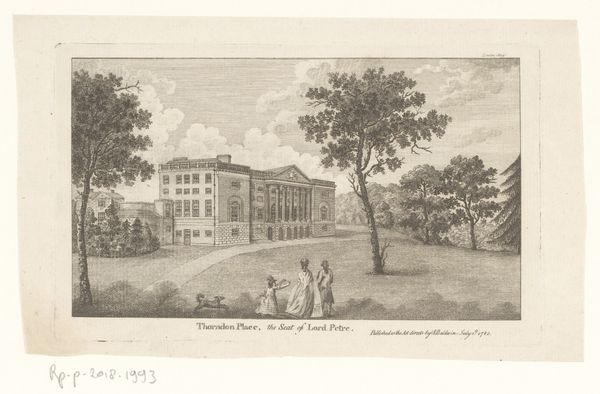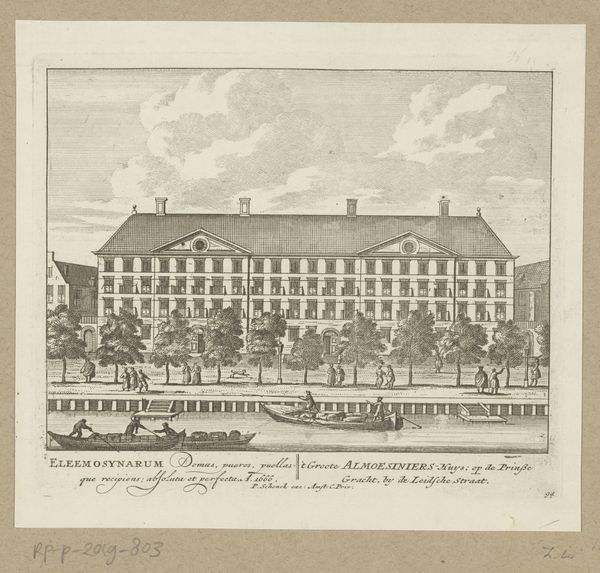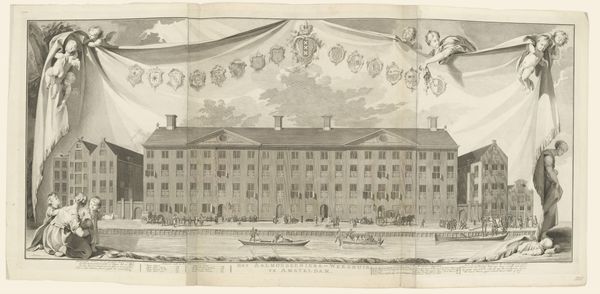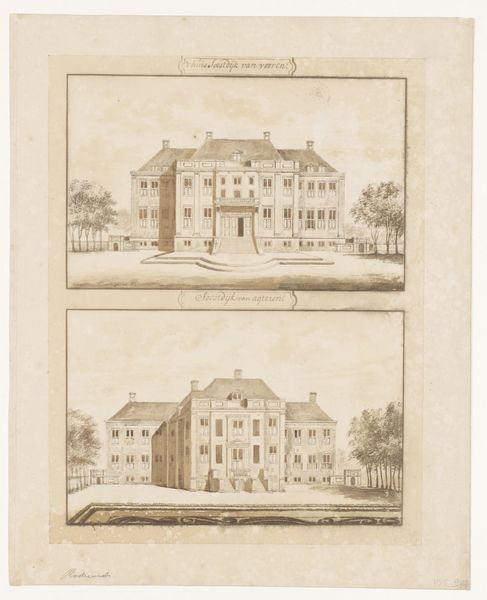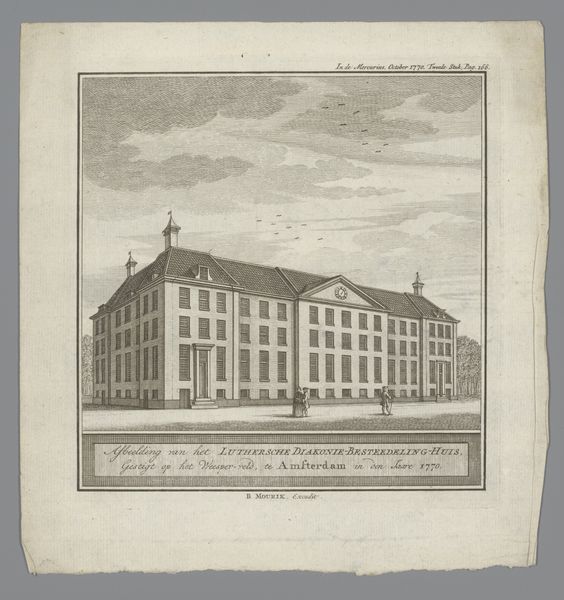
#
aged paper
#
homemade paper
#
paper non-digital material
#
fashion mockup
#
flat design on paper
#
light coloured
#
personal journal design
#
retro 'vintage design
#
publication mockup
#
paper medium
Dimensions: height 94 mm, width 129 mm
Copyright: Rijks Museum: Open Domain
Curator: This is an etching titled "Gezicht op het Nieuwe Werkhuis te Amsterdam," dating back to 1789. The artist is anonymous. It depicts the New Workhouse of Amsterdam. Editor: The Workhouse, seen so formally. It’s all about geometry here. Those tiny people, a lone cow... feel oddly placid. Maybe ominous. There is very light contrast though. Curator: Workhouses served as institutions for the poor, providing them with housing and employment. This etching therefore offers insights into the social welfare systems and urban planning of 18th-century Amsterdam. The artist’s focus on architectural detail gives importance to public institutions and the way they were perceived and presented to the public. Editor: Perceived by whom, I wonder? There's something unsettling about this level of architectural precision – almost sterile. It makes the buildings seem not quite lived in, yet... important. The workhouse dominates the image, symbolizing, what exactly? Control? Refuge? A little bit of both? Curator: Exactly. The location of this depiction within the Rijksmuseum speaks to the evolving status of such institutions. In their time, workhouses like this were expressions of municipal and state control, whereas their role in social reform are contested in the modern museum space. Editor: It's that tension – that very controlled exterior versus the presumed chaos and desperation it contained that I find so intriguing. A very flat rendering though and on aged paper so a strong historical vibe overall. The sky too makes it even more intense with that low level contrast. Curator: The deliberate lack of emotional expression or narrative intrigue typical of the period helps to normalize institutions like the workhouse as simple, and perhaps expected features, of urban life. This way, the viewer will accept their function and be accustomed to them, whether in reality or by way of imagery. Editor: Right. Almost makes you feel like its just “always been there”. It's funny, isn't it? How something created with the intention of, let’s say, societal control can, centuries later, spark such empathy. Maybe all art is just propaganda in hindsight. Curator: It's a fitting observation; art challenges assumptions about both present day structures, and past ones. The power in examining it allows to better assess what the artist presented to begin with. Editor: Food for thought, indeed. Maybe a strong espresso to cut through this weight.
Comments
No comments
Be the first to comment and join the conversation on the ultimate creative platform.
